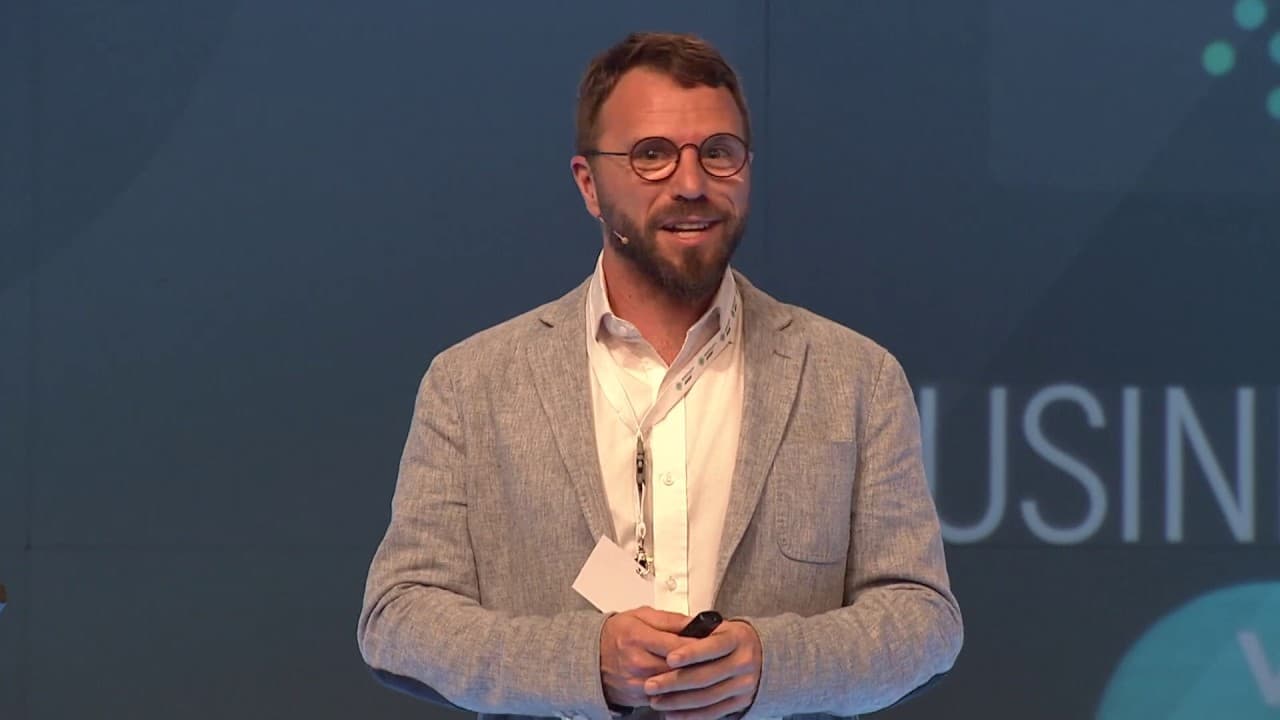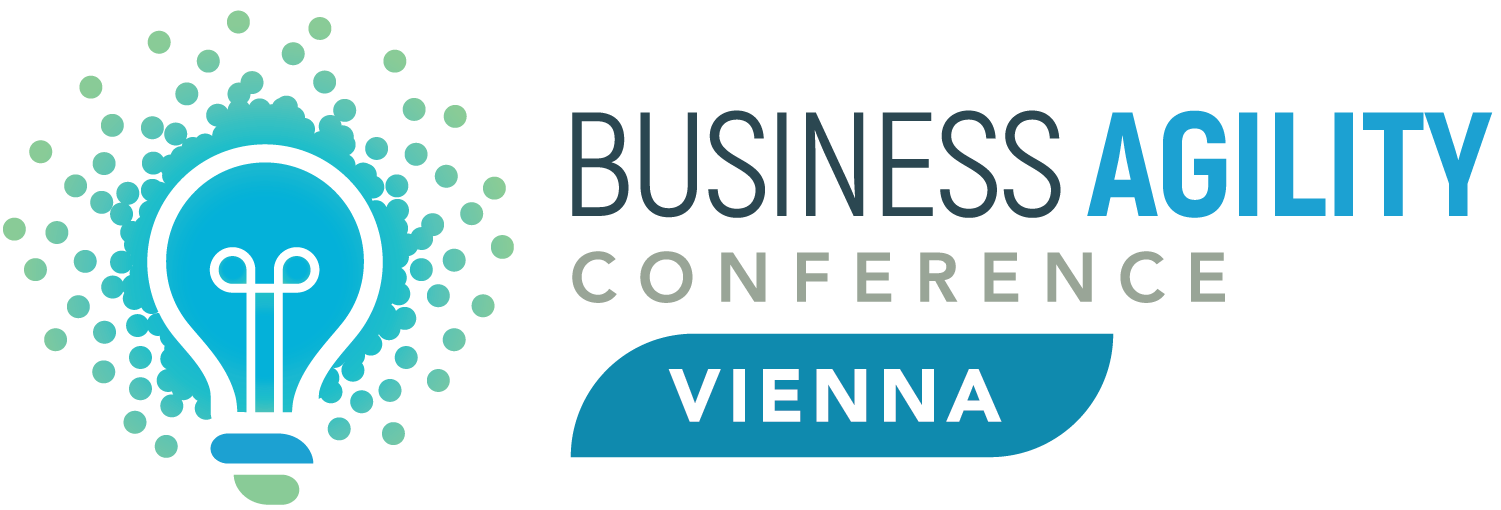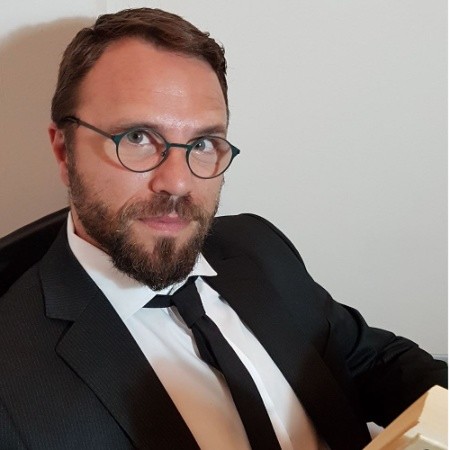Raise your hand if you've ever felt like the "old man" in your company. That was certainly the case for us. We did it, we grew, and then we hit challenges. This feeling was the trigger for the transformation we’re going to talk about today.
De Maria has shared her company’s transformation, and what we’re about to present is quite similar. The background might differ—we’re not a multinational company but a former startup—but the essence remains the same.
We started today by saying, "Bring your boss." Well, I’m the boss, and I brought my path! It’s rare to see CEOs actively participating in these conferences, but in our case, this was never just an IT department adopting Scrum or Kanban. This was a company-wide transformation.
Context and Growth
Context is key. We are an IT company, meaning 40% of our workforce is in IT. We develop transactional services for B2B companies, such as Babel, the largest billing and payment ecosystem in the travel industry.
When we began our transformation, we had around 100 employees. Undertaking such a project in a company of this size is vastly different from doing so in a company of 1,000 employees. Our journey involved distinct phases of growth and restructuring.
The Early Days
Let’s go back 15 years. What do you see in this picture? Besides a bunch of young, attractive engineers, you’ll notice we didn’t have post-its yet—just old-fashioned pieces of paper on the wall. That was our pipeline. Everyone knew, at all times, what was happening in the company.
We all sat around the same table. Someone would finish a call with a customer and immediately share the feedback. Our senior architect, Manuel, was coding in real time based on customer requests. We were pure, unfiltered agility.
The Middle-Age Crisis
We did well, we grew, and we hit 50 employees. That’s when things changed. We thought, "Small companies want to be big, so let’s behave like the big ones!" We created departments, appointed managers—sales managers, integration managers, you name it.
But this had consequences. We were no longer as agile. We were still good at identifying opportunities, but we struggled to capitalize on them. Why? Because we weren’t aligned.
We had become managers with our own departments, our own policies, our own goals—but we didn’t ensure these goals were fully aligned with the company’s vision. Our most loyal customers started telling us we weren’t the same company they once knew. That hit hard.
Our First Attempt at a Solution
When people in a company don’t perform as expected, what do most companies do? They add more layers of control. And that’s what we did. We assumed people needed more direction, so we added middle managers.
But then we realized this wasn’t scalable. We wanted exponential growth in the coming years, but the way we were operating wouldn’t support it. We faced a choice: change or die. Not die from failure—die from success. We were successful, but we needed to change to sustain it.
Inspiration and Commitment
We started talking to other companies, reading books, and exploring frameworks. Books like The Seven-Day Weekend, Good to Great, Drive, and Reinventing Organizations inspired us.
We looked at frameworks like Scaling Up, Agile methodologies, and Sociocracy. We realized there was another way to structure our company. So we committed ourselves to a full transformation.
Eight Key Factors in Our Transformation
1. Identifying Our Values
Unlike some companies, we didn’t have to change our mindset—we were already a startup. But we needed to clearly define our values. We launched a collaborative initiative to identify them and established that we are:
- Challengers
- Many-x People
- Free-exchange Lovers
- Fantastic Team Players
2. Acting Accordingly
Phil said yesterday, "This is the time for hard calls." For us, that meant letting go of a senior tech lead who wasn’t aligned with our values. It was a tough decision—he was crucial to our company—but it gave us credibility.
3. Finding the Right Help
You can’t do this alone. You need experienced guidance that aligns with your values.
4. Gaining Leadership Buy-In
Our president, Chavez, had quite the reaction when we told him this transformation would be expensive—not just in consulting fees, but in the resources and time we’d need to invest. But after recovering from the shock, we aligned fully, which was crucial for success.
5. The Consultant as a Partner
We needed a consultant who wasn’t just an advisor but was hands-on in change management and daily decisions. Every transformation project needs its Quixote and Sancho Panza.
6. Internal Accountability
You also need someone inside the company fully accountable for the transformation’s success. For us, that was Santiago.
7. Creating a Brand
We branded our transformation Optimus Prime. We made stickers and T-shirts. It sounds simple, but it created engagement and emotional buy-in.
8. Defining the Driver of Transformation
For us, the driver was finding an organizational model that would support our scale and exponential growth.
Executing the Transformation
The first step was discovery. We conducted an in-depth analysis, identifying root causes and prioritizing based on business impact. We used Sociocracy as our foundation, ensuring principles like consent, equivalence, accountability, and transparency guided our transformation.
We structured our organization around a Peach Model—customer-centric, fully accountable teams handling products from start to finish. We implemented iterative change, using A3 thinking from Lean to experiment, measure, and refine.
Challenges and Results
Transformations are not always pretty. There was resistance. Change is stressful. Aligning all departments, especially sales, was difficult. But we adapted.
The results?
- We became the best place to work.
- Our throughput and efficiency improved significantly.
- We joined forces with other companies to share and learn.
Final Thoughts
Transformation is tough, but it’s worth it. If you want to share experiences or learn from others, reach out. Join a society meet-up, email us, and continue the conversation.
It was a close call, but we did it. And we hope you now have the insight and inspiration to take your own organization through this journey.




 Voxel Group has recently earned two state awards in 2018 for the most competitive mid-sized company and, in 2019, best workplace in Spain. Before these accolades we were close to falling into the abyss. We introduced the Scaling Up! method, various scaled scrum frameworks and Sociocracy3.0* to transform the whole company both from the top-down and bottom-up.
Voxel Group has recently earned two state awards in 2018 for the most competitive mid-sized company and, in 2019, best workplace in Spain. Before these accolades we were close to falling into the abyss. We introduced the Scaling Up! method, various scaled scrum frameworks and Sociocracy3.0* to transform the whole company both from the top-down and bottom-up.
